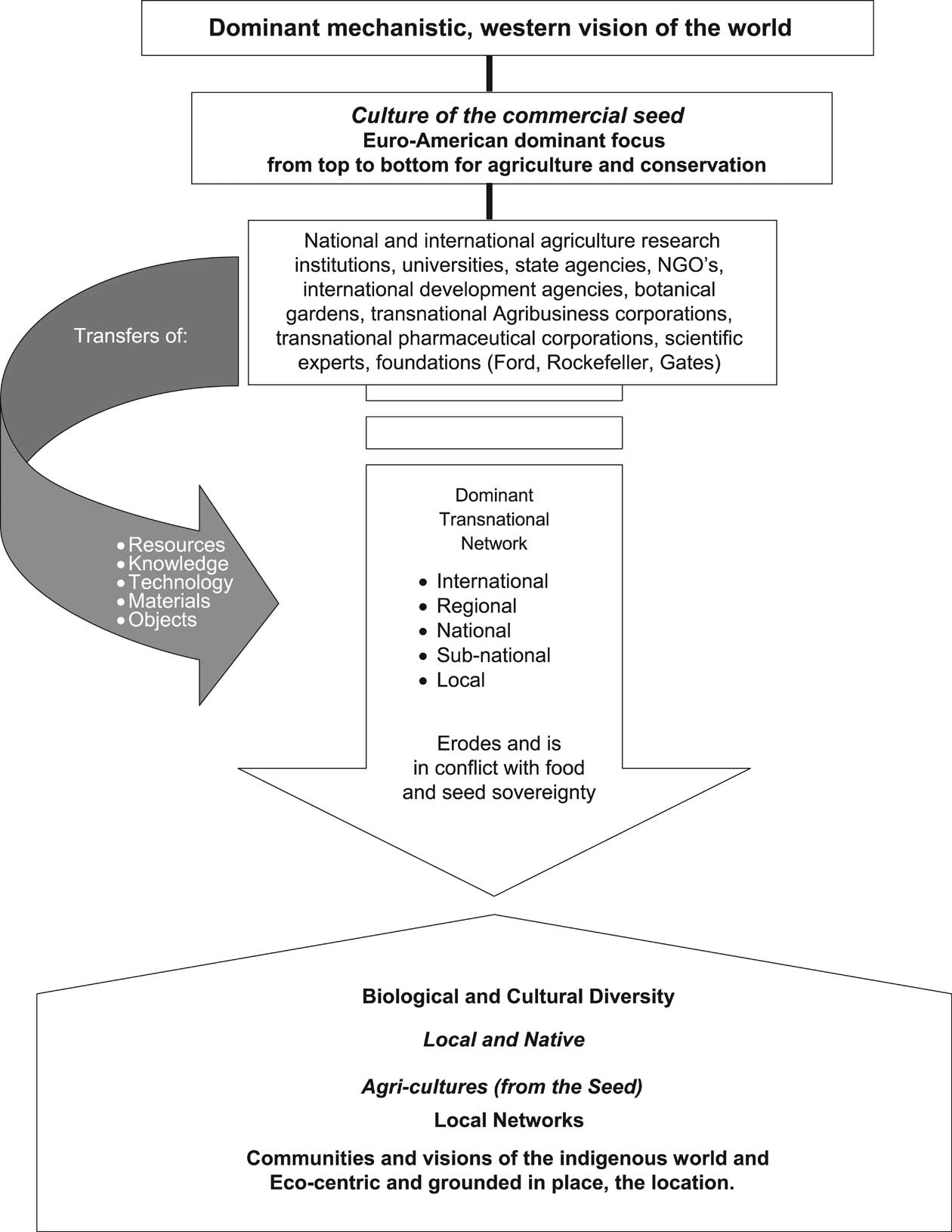
| Previous | Return to table of contents | Search Reports | Next |
| « Back to weltagrarbericht.de | ||
Agriculture in Latin America and the Caribbean: Context, Evolution and Current Situation | 47

Figure 1-10. The dominant productivist/conventional vision for agriculture and
conservation, from top to bottom. Source: Elaborated by T. Gonzales based on Pimbert,
1994; Gonzales, 1996, 1999, 2009; Escobar, 1998b, 1999
|
region, in the growth of the space in the face of the reduction
of place, i.e., of the local world (see Table 1-10). “Place”—
which is where the local, peasant-indigenous languages, cultures,
rituals, knowledge and wisdom and AKST systems
are, with all of life, for the last 60 years, in particular—has
been eroding significantly due to the policies that accord
priority to the growth of the homogenizing space related
to modern single-crop agriculture (Blazer, 2004; Gonzales,
2009). In the last 60 years modern agriculture and as a result the system of agricultural education, research and extension work was strongly emphasized by agricultural development policies. This conventional/productivist agriculture is based on the mechanistic scientific outlook that arose in western Europe (Figure 1-10). Eurocentrism,7 in for- ______________________ 7 Eurocentrism “is the imaginative and institutional context that informs contemporary scholarship, opinion and law. As a theory, it postulates the superiority of Europeans over |
mal education generally and in agricultural education in particular, has contributed crucially to the dissemination and growing dominance of the mechanistic outlook (Rengifo, 1998; Bowers, 2002). Basic scientific knowledge on and for manipulating agriculture has been and is being generated ___________________________________________________ non-Europeans. It is constructed on a set of assumptions and
beliefs generally accepted without prejudices by educated
Europeans and North Americans who commonly accept them
as the truth, as supported by “the facts” or as “reality.” A
key concept behind Eurocentrism is the idea of diffusionism.
Diffusionism is based on two assumptions: (1) most communities
are hardly inventive and (2) a few human communities (or
places, or cultures) are inventive and are, accordingly, the permanent
centers of cultural change or “progress.” On a global
scale, this results in a world with a single center—Europe—
and a periphery that surrounds it” (Battiste and Youngblood
Henderson, 2000). For further thoughts, see Lander (2000), |
| Previous | Return to table of contents | Search Reports | Next |
| « Back to weltagrarbericht.de | ||